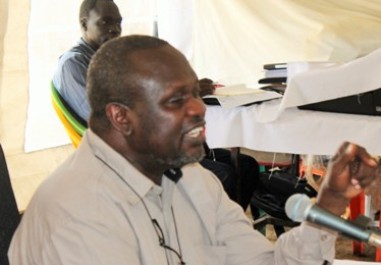SPLM-IO says okay with the allocation of national ministerial portfolios
January 10, 2016 (ADDIS ABABA) – South Sudan’s main armed opposition faction of the Sudan People’s Liberation Movement (SPLM-IO) said they were not “satisfied”, but okay with the allocated ministerial portfolios to form a transitional government of national unity.

The government selected 16 portfolios; SPLM-IO selected 10 institutions; former detainees got 2 and other political parties went with 2 positions.
Among the selected positions by the SPLM-IO included ministry of petroleum and ministry of interior, in addition to 8 others.
Asked by Sudan Tribune whether the opposition faction was satisfied with the allocated ministerial positions, official spokesman of the opposition leadership said they were okay with the outcome but not satisfied.
“I wouldn’t say we are satisfied with the selected 10 ministerial positions. But we have accepted them and we are okay with the outcome,” said James Gatdet Dak on Sunday.
“The consensus was a giant step towards formation of transitional government of national unity,” he added.
He said as an organization spearheading reforms in various sectors, it would have been better if they got most of the institutions which badly needed reform as a priority.
The peace agreement provided for a selection process of the ministerial positions which would have been based on rational basis among the four factions, but the parties instead reached a consensus on how to divide up the 30 ministries successfully.
Dak said the chairman and commander-in-chief of the opposition faction, Riek Machar, will nominate names of individuals to be appointed to the selected positions. He however added that their top leader will not travel to Juba until the joint integrated police and military forces are deployed in the capital.
A next expected step will be to form a government of national unity, which will then sit to resolve on some of the remaining contentious and controversial matters such as the creation of 28 states versus the current constitutionally recognized 10 states.
The peace agreement was signed based on the 10 states including the formula of power sharing among the parties in the states.
(ST)
